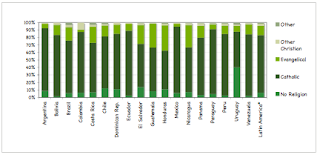If you don't count my trip to Buenos Aires, which is only a short boat ride away, São Paulo was my first real "trip" since my arrival in Buenos Aires. I decided to come for the weekend of May 25th since that was the date of this year's gay pride march, which by all counts is by far the largest in the world. This year, officials are saying 3 to 5 million people took to the streets in support of the gay community, or perhaps just to party.
Knowing that São Paulo is known more for world-class dining, nightlife and other indoor pleasures than for quiet parks and pedestrian-friendly streets, I decided to splurge just a little by staying in a hotel room and enjoying a trendy meal or two. Here I am at the top of the BANESPA building in the city center.
This only gives you a small glimpse into what is an absolutely sprawling city, home to something like 13 million people and one of the most populous cities in the world.
A definite highlight of the trip was getting the chance to reunite with four of the Fulbright Scholars I had met about 6 weeks earlier during the conference in Buenos Aires. Here we are on Avenida Paulista in the heart of the parade.
Somewhat serendipitously, the theme of this year's parade had plenty to do with my research topic. The poster below reads "12th GLBT Pride Parade: Homophobia Kills! For a De Facto Secular State!" The organizers of the parade wanted to advocate the removal of religious influence from state policymaking, with respect to legal protection of gay and lesbian persons in the workplace and same-sex partner benefits. The image on the left depicts the many religions that make up Brazilian society, and advocates a form of "secularism" that is not anti-religious but rather respective of all minority groups, both religious and sexual.
Given Brazil's reputation for a somewhat libertine attitude toward the topic of sex, I thought this next photo was very funny.
All in all, the parade weekend was an absolute blast. I also thought the city itself was spectacular, in spite of the warnings of the Brazilian consulate officer who issued my visa that I was wholly ill-advised to go to São Paulo instead of Rio for tourism. While not atmospheric like Buenos Aires, and nowhere near as cheap, Sampa wins high marks for its great food, nightlife, shopping, and impressively liberal attitude.







